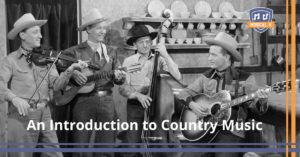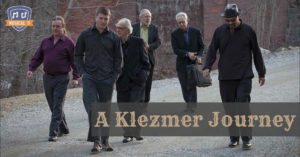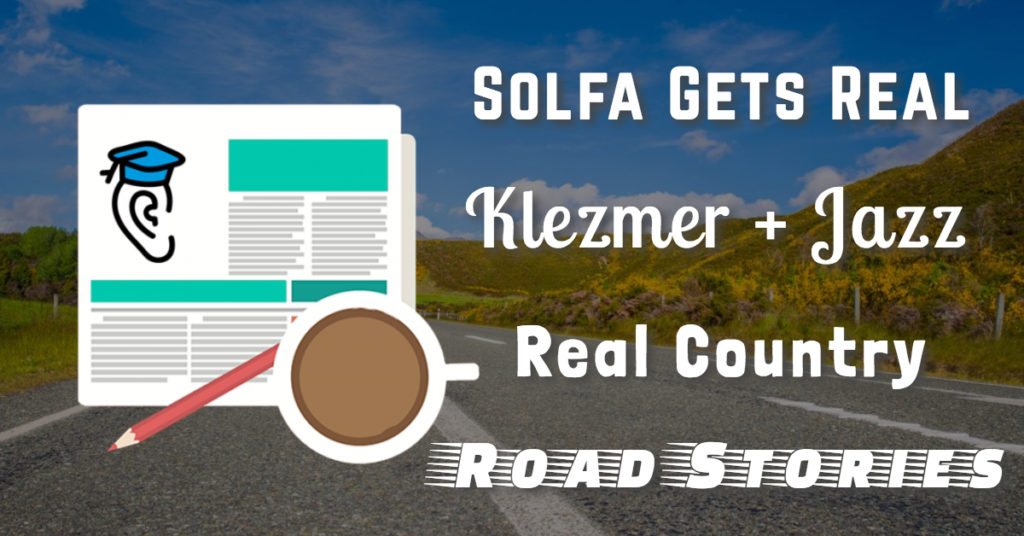Why are we so drawn to music? Where else can we engage our minds, bodies, emotions, and spirits all in one beautifully orchestrated experience? In other words, music is real – maybe even more than real. Just like a scientist studying the natural environment, we cultivate understandings of music in the lab of our practice room, but encounter all kinds of unexpected variables when we venture out into the real world.
This week we’ll take our solfa skills on a test drive with real music and hop into the steaming van of a popular tribute band on the road. We’ll also explore the mixing and melding of migratory “species” of musical genres as we discover the real roots of country music, and experience how a classical clarinetist is fusing his childhood love of jazz with his Jewish roots.
Solfa Gets Real
 Do, re, and mi may be easy to spot in an exercise, but how do they fare out in the world of real music? One of the best ways to find out is to try it out with children’s music: the melodies are relatively simple, and will help you keep a positive happy vibe while practicing. When you’re Applying Solfa to Real Music, you’ll see just how magical your solfa skills are when it comes to playing by ear and transcribing.
Do, re, and mi may be easy to spot in an exercise, but how do they fare out in the world of real music? One of the best ways to find out is to try it out with children’s music: the melodies are relatively simple, and will help you keep a positive happy vibe while practicing. When you’re Applying Solfa to Real Music, you’ll see just how magical your solfa skills are when it comes to playing by ear and transcribing.
What are some ways to apply solfa?
In this tutorial, Music Corner teaches you how to hear tonally with these ten well-known songs.
It’s beneficial to understand the melodies you’re singing and where each note falls on the scale. Modern Songstress explains how solfege can help you understand melody relative to the key.
Does the thought of singing in your instrumental musical classroom make your cringe? You might want to give it a second thought: Dr. Kelly Thomas for Sonicbids explains why using singing and solfege as classroom tools can benefit instrumental students.
Real Country
 To many, country music is instantly recognizable. Is it the twang of the vocal style? The fiddle and steel guitar? The recurring lyrical themes of real-life human relationships and rural culture? Even the most “pure country” results from a surprising mix of 20th-century genres. Learn more country history in An Introduction to Country Music.
To many, country music is instantly recognizable. Is it the twang of the vocal style? The fiddle and steel guitar? The recurring lyrical themes of real-life human relationships and rural culture? Even the most “pure country” results from a surprising mix of 20th-century genres. Learn more country history in An Introduction to Country Music.
While those uninitiated in country’s its breadth and depth often malign the genre, Global Comment appreciates it, and offers these 17 songs as examples of country’s brilliance and diversity.
For some people, country music is about beer, pick-up trucks, and tractors, but is it? Here are 16 country songs for people who don’t like country music from The Odyssey Online.
Is country music just for Americans or can it speak to young Londoners, too? The Badger Online attempts to answer that question.
Matchmaker, Matchmaker
 In our world of nearly universal availability of global music, what becomes of the old traditions? Often these days, matching and blending musical genres becomes a journey of personal discovery rather than a product cultural isolation. Old genres become revitalized through some of these unlikely “mixed marriages”.
In our world of nearly universal availability of global music, what becomes of the old traditions? Often these days, matching and blending musical genres becomes a journey of personal discovery rather than a product cultural isolation. Old genres become revitalized through some of these unlikely “mixed marriages”.
Paul Green – an acclaimed classical whiz kid on the clarinet – always loved the jazz of Louis Armstrong and Benny Goodman. After a successful legal career, he returned to music, to his love of jazz, and to his Jewish roots in klezmer music. Paul’s Klezmer Journey can inspire us all to create the music that is most real to us.
Who were other some other musicians who helped to bring klezmer into the 21st century? NAMM interviewed violinist and klezmer pioneer Yale Strom as part of their Oral History Program.
Just how close is the music of the Klezmer Revival to its European roots? The Forward excavates the lost pre-war klezmer recordings.
What started out as instrumental music to be played at Jewish events has become an art form closely associated with Jewish tradition. In this episode of American Jewish Music from the Milken Archive, Leonard Nimoy, Neil Levin, and Gerard Schwarz discuss the history of klezmer and its influence.
Real Road Warrior
 Our very own intrepid Musical U community conductor Stewart Hilton continues his tales of his summer on the road with a successful tribute band. His journey highlights the importance of a professional attitude and thorough preparation in dealing with the unexpected variables out there in the real world of a touring musician.
Our very own intrepid Musical U community conductor Stewart Hilton continues his tales of his summer on the road with a successful tribute band. His journey highlights the importance of a professional attitude and thorough preparation in dealing with the unexpected variables out there in the real world of a touring musician.
For example, what happens when your private corporate gig stage is set up between a cornfield and a swimming pool on a hot summer night? Find out in Summer of Music: On The Road, Part 2.
As Stewart mentioned, preparation is the key to a band’s tour success. Pro Audio Land offers these tips for musicians preparing for a tour.
Subwoofr lists nine things you should know if you’re preparing to go on tour with your band. Be ready to do a lot of arranging and organizing.
Did you think Stewart’s stories were cringe-worthy? Check out these stories of on-the-road horror from Dylan Welsh for Sonicbids.
Music touches our lives in so many ways. Stewart’s experiences teach us that there is even an intimate relationship between music and van radiators! What seem like abstract theoretical syllables like do, re, and mi, come alive when we apply them to learning real music, and exploring genres from country to klezmer helps us to express the whole of ourselves. Go for it: take your music life and live it real!







